One of the hidden secrets of Oxford is that although many of the University’s colleges now charge an entry fee, you can always claim to be visiting the chapel and get in for nothing. Your spirits cannot fail to be lifted by attending a candlelit evensong at New College or Magdalen. Go in term time, when the choristers are in full voice and you will be transported into the company of angels.
Today I am heading to the chapel of Christ Church College, also the cathedral and mother church for the diocese of Oxford, a dual role unique in the world. I have come early to avoid the crowds and also to check out some alarming new intelligence. Something that I thought – as I make my way under Tom Gate and across the vast main quadrangle of the college where thirteen of our prime ministers were educated – couldn’t possibly be true. For it is rumoured that within one of its most prized stained glass windows, created by the Pre-Raphaelite artist Edward Burne-Jones and dedicated to St Frideswide the patron saint of Oxford, is secreted a modern lavatory. I want to see this for myself.
I am greeted by a man who with his long black robes and grey beard, looks exactly as you might imagine an Old Testament prophet. He introduces himself as Bede, as in the Venerable Bede, the Anglo Saxon scholar who lived at roughly the same time at St Frideswide. I thought this a good omen. It turns out he was so christened after he was born on the same day as the feast of his namesake (May 25th). Now he is an Orthodox priest and one of the 100 or so ecumenical members of the canon here. Every so often he is called upon to lead the prayers in the cathedral, delivered every hour on the hour. He is between shifts and offers to tell me all about the lavatory in question. I feel blessed.
The Frideswide Window is on the east side of the Latin chapel. Made up of 16 panels it tells the story of Frideswide, a Saxon princess who having lost her mother is bought up in a convent and decides to devote herself to God and become a nun herself. However she is expected to marry and when Algar, the King of Mercia turns up to claim her hand by force, she makes her escape by boat, hides in a pigsty in Binsey near Oxford and then takes refuge with some holy women. Catching wind of her return to Oxford to see her father, King Algar races back to the city. But when he tries to enter he is blinded by a thunderbolt. Frideswide feels sorry for the man and prays for his sight to be restored, which by a miracle it is. At last he agrees to leave her be. A healing spring appears in Binsey (a well marking the spot is still there) and Frideswide sets up a priory just inside the city walls, on the site of the place we are now standing. There are archaeological remains of a 7th century graveyard here so there almost certainly some truth to the later part of the story.
Looking up at the window with Bede, as the morning sun transfers a luminosity and vibrancy to the colours, it is hard not to feel moved. The detail is exquisite, ducks chaperone their babies, pigs jostle for position in a crowded sty, King Algar’s men crouch behind hedges, the folds and patterns on the gowns of Fridewide’s nurses surrounding the saint as she lies dying are beautifully applied. And that’s when I see it with my own eyes; in the very last of the story panels. Seat up, handle and flush pipe behind, curtain drawn back, a lavatory for all to see. The height far too low for the washstand some claim it to be. Definitely a toilet. And what’s more it’s pink!
But whatever is it doing in the portrait of Anglo Saxon England when the best that could be hoped for when taken short was a hole in the ground?
Bede says for the answer we must go back to the time the window was completed. It was made by Burne-Jones in 1859, the year after ‘the Great Stink’ when the hot weather in London exacerbated the smell of human waste thrown into the river Thames to unbearable levels. Although Alexander Cummings had been granted the first patent for a flushing lavatory in 1775, it wasn’t until the mid 1800’s that we began to make the link between clean sanitation and health. It was in 1859 that construction began on the first modern sewer system and although not widespread, public ‘retiring rooms’ were starting to be installed. In late 1857 Burne-Jones himself fell ill, probably malaria caused by insanitary conditions. Maybe what he is saying in this picture designed so soon after, is that had Frideswide been supplied with access to more hygienic conditions, a modern toilet for example, she might had survived the fever that killed her.
Bede, however thinks that there are more prosaic reasons for its inclusion. The WC is product placement, he argues, in recognition of the window’s financial investors. Who were porcelain manufacturers! I can see the link between the purity of a saint and the purity of clean water is one that would have appealed to Victorian marketeers. I am only glad they didn’t insist on the sanitary ware being avocado coloured, so favoured in the 1960’s.
But Bede has not finished. There are other liberties Burne-Jones has taken in this window, he continues now getting into his stride. In that last panel, where Frideswide lays in her bedchamber, there is a Welsh dresser, and a bottle-glass window. Not decorative features prevalent in her lifetime, he extols. Apparently the window is designed unusually too – the common way for the stories in church windows to be read, is the same as the journey a plough makes as it works a field, down and then up and then down again. Burne-Jones window reads from the top down, and then again from the top to the bottom. Not conventional at all.
Some people will also maintain that the pictures appear too cramped. There is at least, a reason for this – his designs were made to fit a much larger space. He was simply given the wrong measurements by the architect. Others say the project is his least accomplished work, the faces not as expressive as his later portraits. Personally I don’t agree with either take. I love the detail in the flowers and foliage, the feeling of claustrophobia he evokes as Frideswide hides from the yapping dogs of her tormentors, and the vivid shades of his painted images.
And so as Bede heads off to take prayers, I am left gazing at this most wonderful of tales. The story not only of Oxford’s patron saint, but also of the privy, loo, porcelain throne, crapper, jacks, thunder box or whatever you choose to call it. As it heralded in a new age of cleanliness.

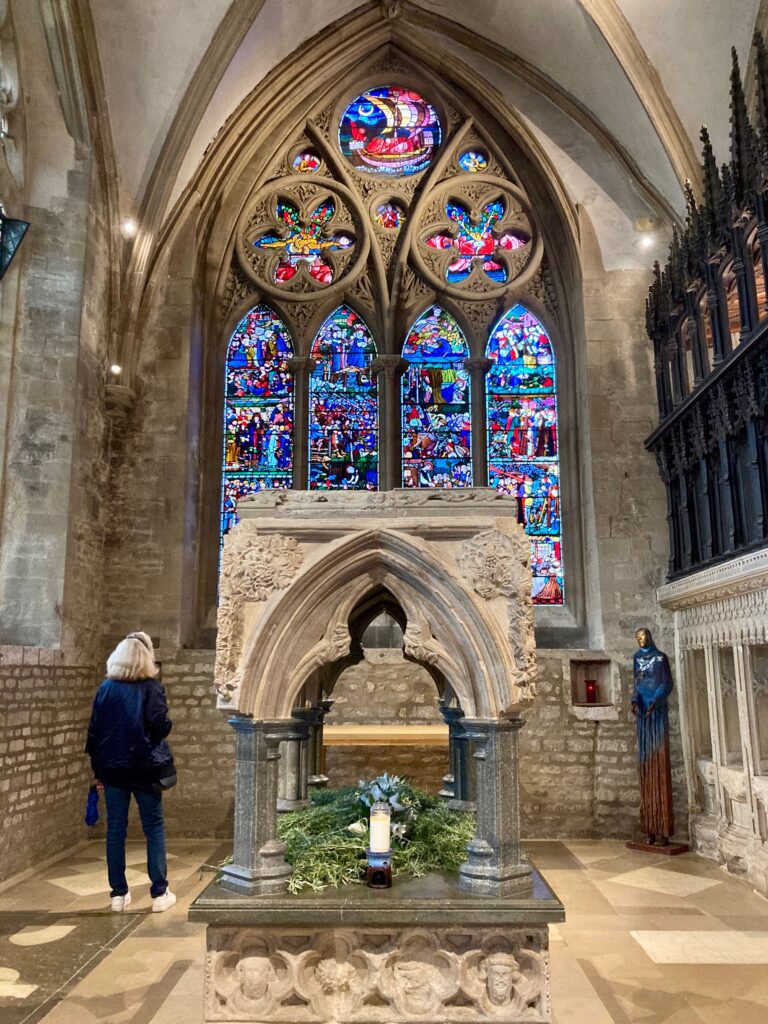
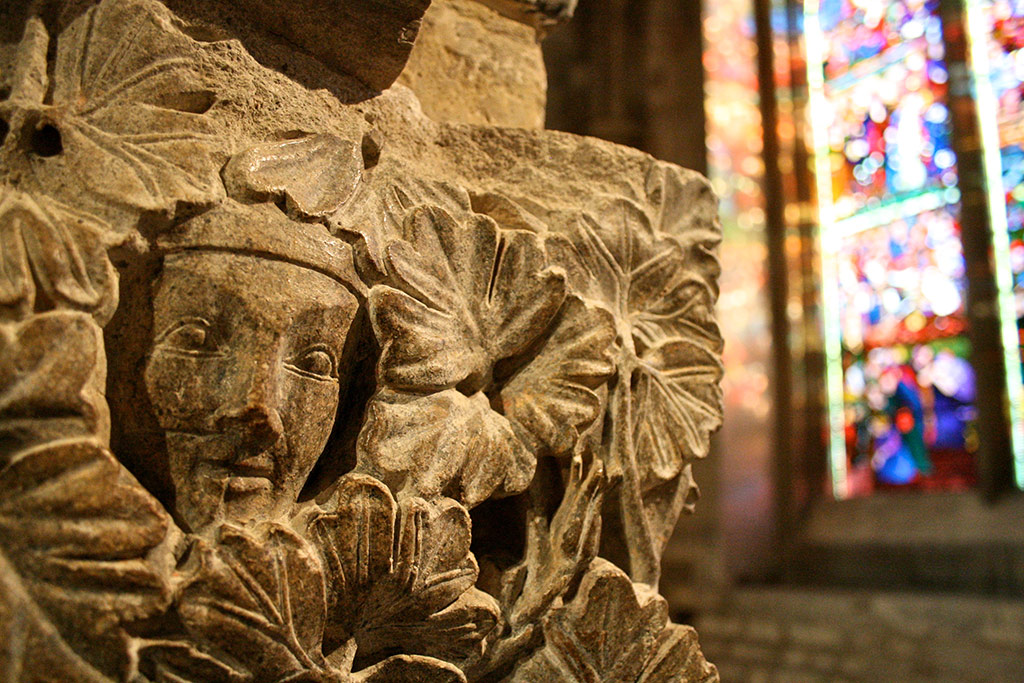
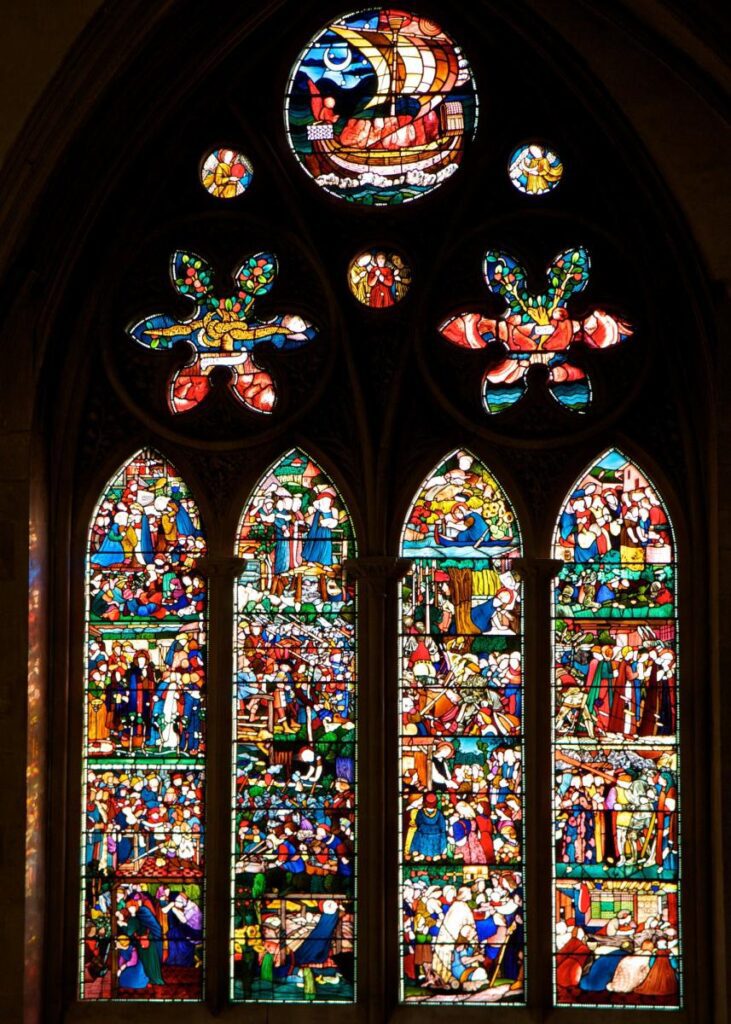
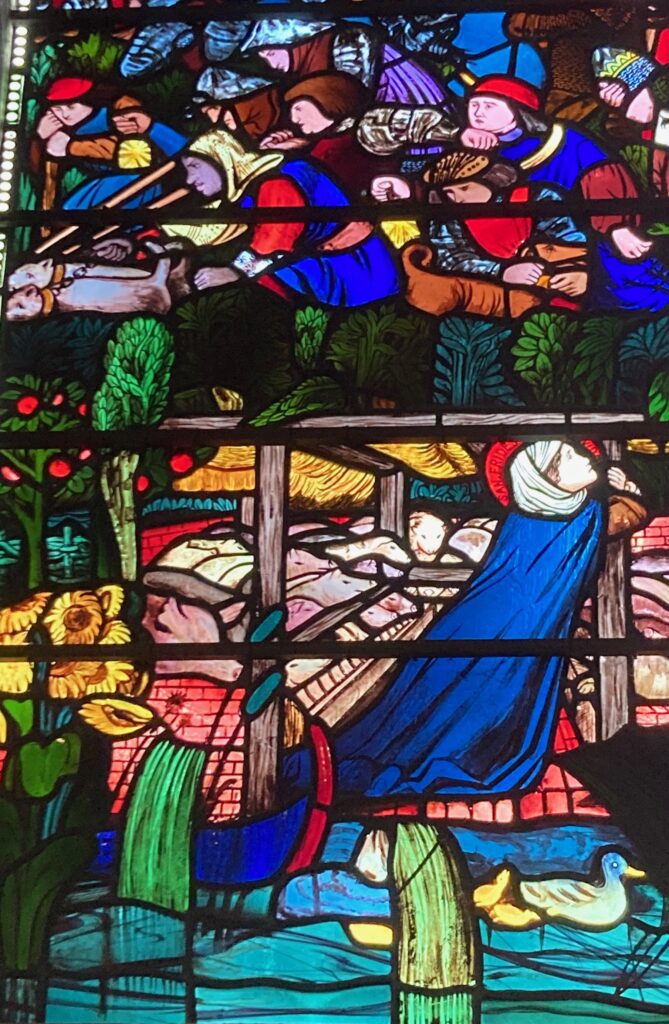

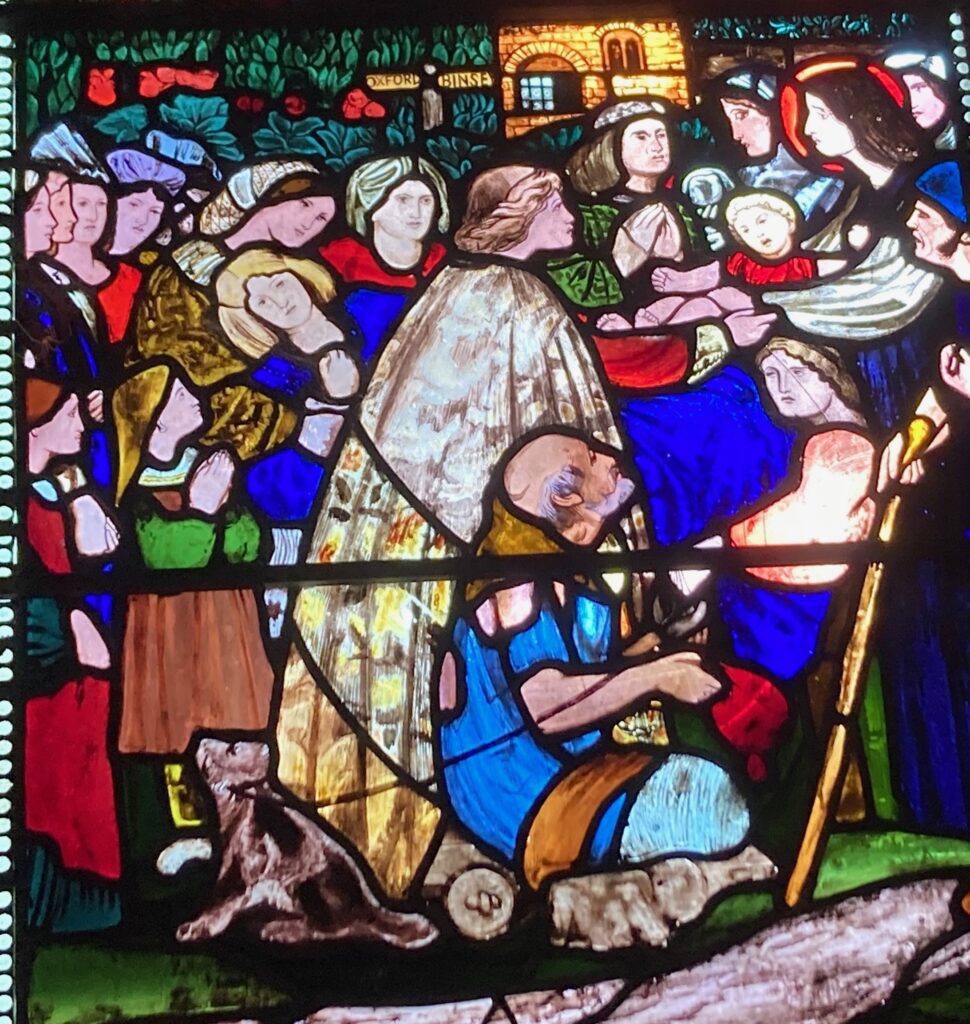
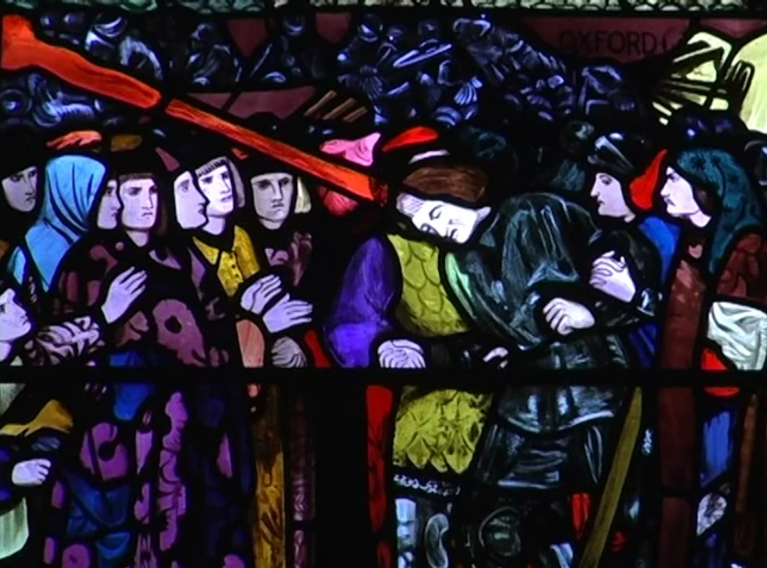

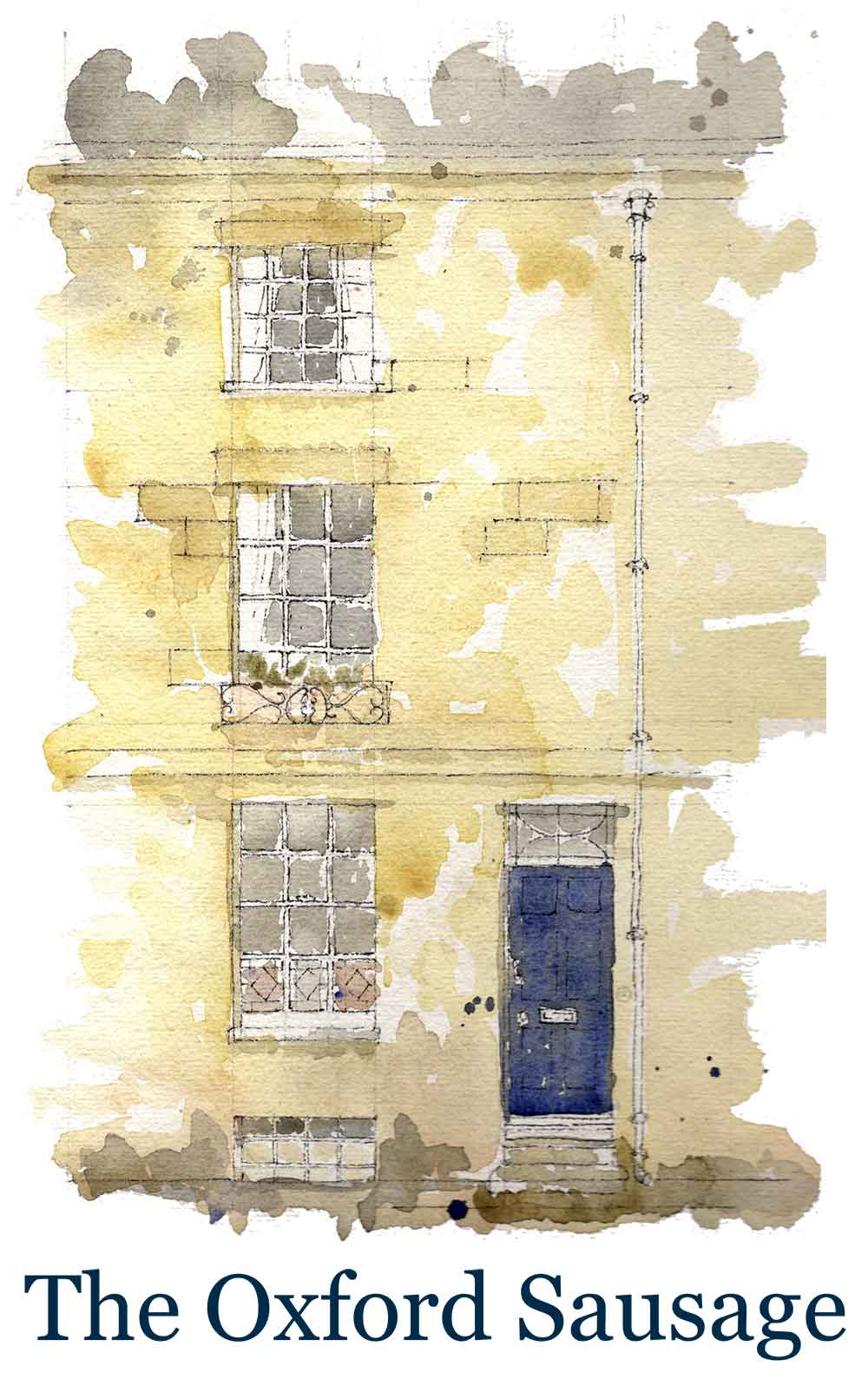

4 Comments
Join the discussion and tell us your opinion.
What a interesting story – I love your uniquely quirky take on such a famous city
So interesting – and I loved seeing the photographs of the windows. Who’d have thought….
A very interesting read – great fun 🙂
Greetings and blessings on St Frideswith’s feast day